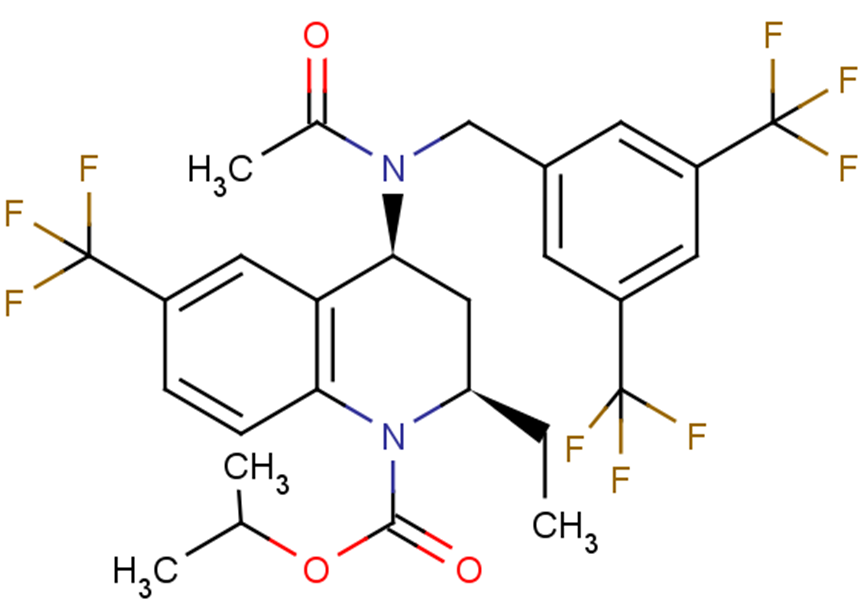| Description: |
CP-532623 is a CETP inhibitor and elevates high-density lipoprotein cholesterolion. CP-532623 is a close structural analogue of Torcetrapib. CP-532623 has highly lipophilic properties[1][2][3]. |
| Target: |
CETP[1] |
| In Vivo: |
CP-532623 (50 mg; oral administration; adult male greyhound dogs) treatment substantially transports into the lymphatic system (>25% dose) in fed and fasted dogs. Food enhances oral bioavailability (from 44 to 58%, respectively) and the proportion of the absorbed dose transports via the lymph (from 61 to 86% and from 68 to 83%, respectively). Lymphatic triglyceride transport is significantly lower in fed dogs administered CP-532623[3]. Animal Model: Adult male greyhound dogs (27-39 kg)[3] Dosage: 50 mg Administration: Oral administration with a long-chain lipid formulation to fed lymphcannulated Result: Substantially transported into the lymphatic system (>25% dose) in fed and fasted dogs. Food enhanced oral bioavailability and the proportion of the absorbed dose transported via the lymph. |
| In Vitro: |
CP-532623 is highly lymphatically transported (28% of dose), and lymphatic transport is closely correlated with drug affinity for ex-vivo lymph lipoproteins or triglyceride emulsions and poorly relates to solubility in mixtures of lipoprotein core and/or surface lipids. CP-532623 alters the kinetics of lymph lipid transport and decreases lymph lipid transport in chylomicrons[2]. |
| References: |
[1]. Blasi E, et al. Effects of CP-532,623 and torcetrapib, cholesteryl ester transfer protein inhibitors, on arterial blood pressure. J Cardiovasc Pharmacol. 2009 Jun;53(6):507-16.
[2]. Trevaskis NL, et al. The mechanism of lymphatic access of two cholesteryl ester transfer protein inhibitors (CP524,515 and CP532,623) and evaluation of their impact on lymph lipoprotein profiles. Pharm Res. 2010 Sep;27(9):1949-64.
[3]. Trevaskis NL, et al. The role of the intestinal lymphatics in the absorption of two highly lipophilic cholesterol ester transfer protein inhibitors (CP524,515 and CP532,623). Pharm Res. 2010 May;27(5):878-93. |






















